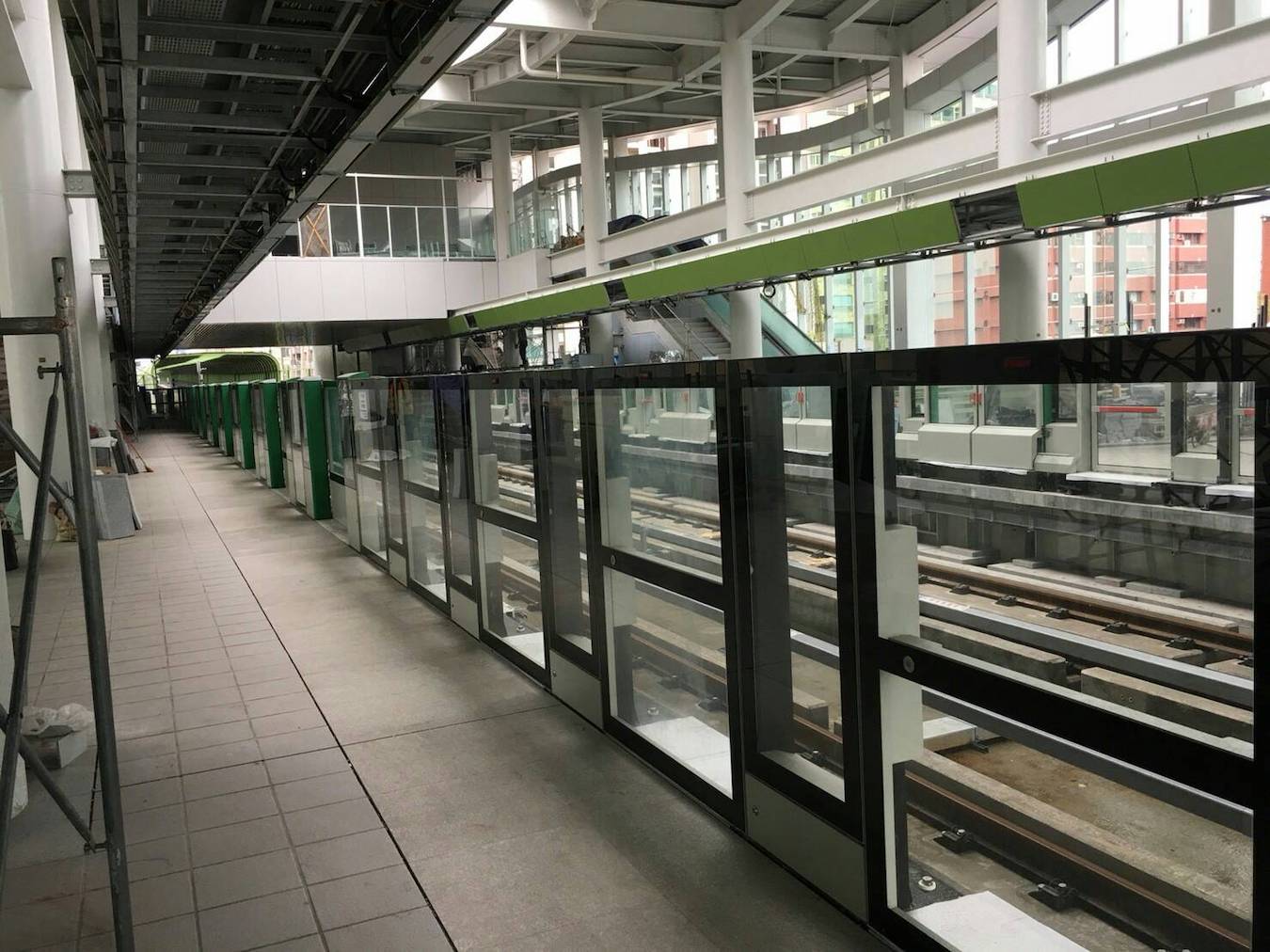by Brian Hioe
語言:
English
Photo Credit: Presidential Office/Flickr/CC BY 2.0
AN MRT ACCIDENT that occurred in Taichung in May killed one and injured ten. This proved to be one of the latest incidents in Taiwan which involves a construction accident that led to deaths on public transportation.
In particular, the accident occurred near Feng-le Park Station on Taichung’s Green Line. A crane boom fell onto the tracks from the 31st floor of a building under construction. Though the boom did not fall directly onto the tracks, it hit the noise barriers around the tracks.
Despite this, the train left the station, crashing into the boom. It was only after crashing into the boom that the train eventually came to a stop. Nevertheless, the accident still led to a fatality.
The deceased, who was found without vital signs on the train tracks, was Lin Shu-ya, a 52-year-old assistant professor of law at Providence University. Lin was known for her advocacy for Indigenous rights and activism in a number of causes, including with regard to transitional justice, human rights, and environmental causes. Lin was formerly the chair of Amnesty International Taiwan and secretary-general of the Taiwan Association for Human Rights, as well as the Indigenous Historical Justice and Transitional Justice Committee of the Presidential Office. Since Lin’s death, there has been an outpouring of grief from Taiwanese civil society.
Video footage shows that 41 seconds passed between the crane boom crashing before the collision occurred. The train’s driver was notified by a worker that saw the crash, but was unable to disable the train in time, fumbling for keys for the emergency stop. The train driver only braced immediately before impact.
In general, train workers had very little time to react after the crash. This may illustrate that emergency stop measures for train staff need to be simplified.
Nevertheless, this is not the only time in recent memory that construction near an MRT or train has led to fatalities. In 2021, a Taroko Express train in Hualien crashed into a train that slid onto the tracks of an oncoming train. The resultant accident was the deadliest rail crash in Taiwan’s history, killing 49 and injuring 213, surpassed only by a 1949 fire.
Later on, it was found that construction should not have been taking place that day, seeing as it was the Tomb Sweeping Holiday. Relevant safety measures were not being followed on the work site and it was found that the company was granted the tender despite a history of violations.
 Photo credit: 臺中市政府
Photo credit: 臺中市政府
More generally, this pattern of accidents gestures toward the rampant violation of safety standards that occurs on construction sites in Taiwan. This is often because of cost-cutting, as well as that construction workers are pushed to meet tight deadlines.
Rail workers, too, are pushed to meet tight schedules. Reductions in the number of workers also increase the danger for passengers. Although the Taiwan Railways had a growing number of riders between the 1970s and 2000s, the number of workers was more than halved, being cut from 22,500 to 12,500 in this period. This also is a contributing factor to accidents.
Nevertheless, the Taiwan Railways Administration (TRA) is likely to cut worker benefits following the reorganization of the company from a part of government to a state-owned enterprise, which may increase the dangers for passengers if workers are less rested but made to work the same loads. In spite of the fact that the accident occurred because of the work site nearby, not through the actions of workers themselves, the TRA has sought to use the accident to push for corporatization, shrugging off the view of workers themselves that this would increase rather than decrease the dangers for passengers.
It may be problems of work culture in Taiwan, then, in terms of cost-cutting and the push to meet tight deadlines, that contribute to rail accidents. This is true whether the root causes are in the rail industry or in the construction industry. But, to this extent, the pattern of accidents raises questions about why construction is allowed to take place dangerously close to train tracks in operation. As such, these accidents raise questions about work sites and their proximity to public transportation infrastructure, as well as what safety measures are mandated to avoid accidents. Otherwise, one expects it to only be a matter of time until the next accident that leads to fatalities.

